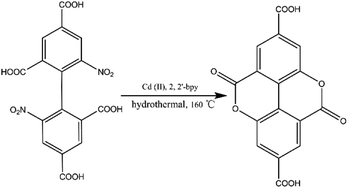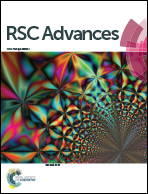A novel 3D Cd(ii) coordination polymer generated via in situ ligand synthesis involving C–O ester bond formation†
Abstract
A novel 3D Cd(II) coordination polymer {[Cd(ddpa)(2,2′-bpy)]·H2O}n (1) (H2ddpa = 5,10-dioxo-5,10-dihydro-4,9-dioxapyrene-2,7-dicarboxylic acid, 2,2′-bpy = 2,2′-bipyridine) is hydrothermally synthesized in situ, and the influencing factors and mechanism for the in situ reaction are briefly discussed. The synthesis of 1 requires the formation of a new C–O ester bond. This current study confirms that metal ions and N-donor ligands play important roles in the domination of the in situ ligand from 6,6′-dinitro-2,2′,4,4′-biphenyltetracarboxylic acid (H4dbta). Furthermore, the structure, thermal stability and photoluminescent property of 1 are also investigated.



 Please wait while we load your content...
Please wait while we load your content...